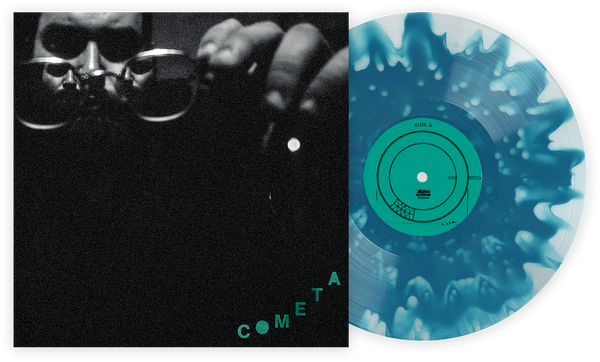Every format and medium has terminology specific to it, and some of those terms are the equivalent of a dose of smelling salts for aficionados. For vinyl fans, we have a few go-to terms, but there is one that stands out as being unlike pretty much anything else in the business of recording music for playback. I speak of half speed mastering.
To get a handle on the mechanics of the concept, we need to go back to basics. When a record is mastered, an acetate-- basically an aluminium disc with a thin layer of lacquer-- is placed on a mastering lathe. This operates like a turntable in reverse. A heavyweight cutting head proceeds to take information held on a master recording-- which these days can be either analogue or digital-- and engrave it into the lacquer of the acetate. Once this has been done to the satisfaction of those involved, a mould is made of the finished article, and in turn, that becomes the device which all vinyl copies of an album are pressed from.
It's worth pointing out that even “normal” pressing is a heady mix of science, experience and art. Absolute control over the cutting head is absolutely vital to the success of the process. Any deviation in the cut will likely render the acetate useless, and huge care must be taken not to overheat the cutting head. The engineer will also need to make a call on the material held on the master recording, and make a decision on whether to apply any form of throttling or restriction to it, as in some rare cases, too much bandwidth can result in an unplayable groove. Modern technology helps the process-- computer location of the cutting head and the ability to regulate the temperature of the tip by various exotic gasses means that some of the basics can be automated-- but there's no substitute for someone who knows what they are doing.
Half speed mastering on a basic level does exactly what it says in the description. A 33rpm acetate is cut at 16 2/3rpm with the master recording slowed down appropriately so that the record still sounds normal when played at the correct speed. On reading this, there should be some immediate red flags attached to this process. If you're in charge of the bottom line, you'll notice that the lathe is going to be tied up for much longer than usual for each album (and in reality, it seems to be more than the twice as long you might expect). The engineer will also lose most audio cues that they might otherwise have, because at half speed, it is hard to make real sense of what you are hearing. As such, the process can only be done by a few souls who have the ability to work on instrumentation alone.
The problems don't end there. Only a select few lathes have both the facility to be used in this way, and fewer still have the sheer resilience required to function correctly while doing so. This means that not only are you holding up a lathe for longer, the chances are it's the best one in the inventory, and therefore the one in highest demand. The strain on the cutting head is high, as the friction build up is considerable. In turn, mistakes can be harder to track as they are happening more imperceptibly.
So why bother? The reason for going to this effort is that at a half speed pass, the cutting head has more time to render the groove and this allows more information- especially fine detail- to make it into the recording. The head is essentially getting double the amount of time to complete the information, and this has two effects. The first is that there should be more fine detail in a recording when you play it back on a normal record player, and the more advanced your stylus profile is, the better this is going to get. The second is that the cutting process is more stable, so when the recording encounters long sustained notes- the traditional torture test for analogue replay- there should be less sign of waver in the note.
You might reasonably ask, why stop there? Why don't we wait for a quarter speed version or something done at the speed of mammal evolution? Well, simply put, the strains on the equipment at half speed are pushing the limits of what the acetate can handle. Even running at 50% speed, the head can 'snag' the acetate and ruin it, and this problem becomes more problematic the slower you go. Half speed represents the 'sweet spot' where the gains outweigh the penalties.
In terms of the effect it has on reissued material in particular, the effect of a half speed master is unique. When an album is remastered, there is an unavoidable sense of subjectivity to the work done and the fashion and preferences of the moment can make their way into the process. You only need to listen back to back to something like ZZ Top's Tres Hombres, which was originally recorded in 1973, but then received what is best thought of as the most ‘80s remastering of all time, to realize that this process is not always beneficial.
With a half speed master, unless explicitly stated that remastering has taken place at the same time, there is no change to the original artist content, created (hopefully) as they wanted it and as they intended at the time. All the process does is study the master more intently and secure more information. As such, there's no ambiguity over what you are getting- just the best possible version of what is in the original recording.
This does mean that half speed mastering is not, and never will be a magic bullet. It can't compensate for a poor master- indeed all it will do is shine a more revealing light on the problems- and it can't reduce issues like clipping and compression. Given the difficulties involved with producing the content, it will always be reserved for material that is worth the effort in the first place. As many labels are somewhat risk averse, this does tend to mean that only very well known material guaranteed to sell in quantity gets the opportunity to have a half speed master done.
The unique setup of Vinyl Me, Please allows for a slightly different take on this. Both our record of the month Person Pitch and our other previous half speed release, Pink by Four Tet represent albums of immense brilliance that might not have otherwise seen such attention lavished on them. Our strength in numbers gives us a chance to experience the results of this challenging and difficult process on albums we care deeply about. So, when you give your copy a spin, take a moment to think about the work that went into making it happen and enjoy the results.
Ed is a UK based journalist and consultant in the HiFi industry. He has an unhealthy obsession with nineties electronica and is skilled at removing plastic toys from speakers.
Join the Club!
Join Now, Starting at $36Pages












